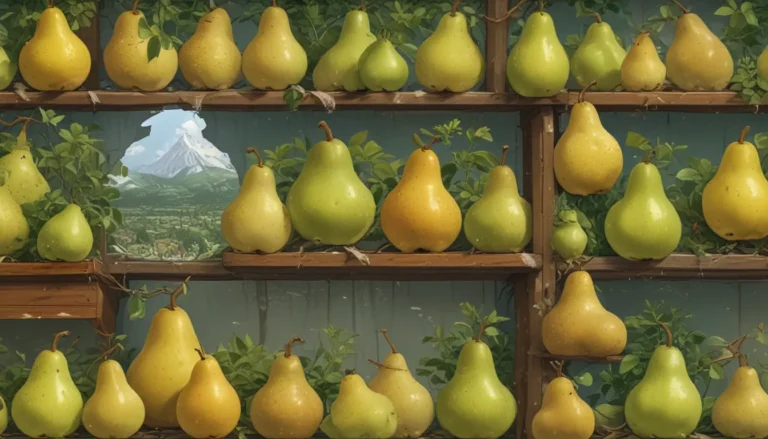Mastering Cauliflower Growing: A Complete Guide

Cauliflower, a beloved vegetable, can pose challenges for home gardeners. It requires specific conditions to thrive and produce its iconic heads. When these conditions are not met, you might find yourself with a bountiful harvest of green leaves but no cauliflower heads. It’s a disappointing sight for any gardener.
In this comprehensive article, we’ll explore 11 common reasons why your cauliflower might fail to form heads. By understanding and addressing these factors, you can increase your chances of a successful harvest.
Why Isn’t My Cauliflower Forming Heads?
1. Wrong Seed
Choosing the right seed is crucial for a successful cauliflower harvest. Ensure that you select varieties suited to your USDA Hardiness Zone. Cauliflower thrives in temperatures ranging from 60 to 70°F, so pick varieties that match your climate’s growing season. Consider the latest cultivars with improved temperature tolerance and shorter maturation periods for better results.
2. Seedling Stress
Cauliflower is sensitive during its development, especially in the seedling phase. Start seeds indoors at least four to six weeks before the last frost date. Transplant seedlings when they have grown two sets of true leaves, ensuring the ground temperature is at least 50°F. Avoid waiting too long to transplant to prevent root-binding, which can hinder nutrient uptake.
3. Lack of Sun
Cauliflower, like other Brassica plants, requires full sun to thrive. Ensure your plants receive at least six hours of sunlight daily. If your region experiences hot afternoons, consider planting in partial shade. However, insufficient sunlight can slow growth and hinder head formation.
4. Soil Deficiencies
Cauliflower thrives in organically-rich soil. Conduct a soil test to determine nutrient levels and improve the soil with compost, manure, or humus as needed. Ensure a balance of macronutrients like nitrogen, phosphorous, and potassium, along with micronutrients like calcium for optimal growth. Proper pH levels (6.5 to 7.0) are essential for cauliflower cultivation.
Enhance soil fertility by adding organic matter for better nutrient uptake, preventing issues that may hinder head development.
5. Inadequate Drainage
While cauliflower requires consistent moisture, poor drainage can lead to wet soil, leaving roots vulnerable to pests and diseases. Ensure that your cauliflower plants are not standing in water, as it may hinder nutrient uptake and cause head formation issues.
6. Insufficient Moisture
Cauliflower is a thirsty plant, requiring one to two inches of water weekly. Monitor rainfall and supplement with irrigation as needed. Avoid letting the soil dry out, as it can lead to stress and impact head development. Windy conditions can also accelerate moisture evaporation, so protect plants during gusty weather.
7. Overcrowding
Proper spacing is crucial for healthy cauliflower growth. Space seedlings at least 24 inches apart with 30 to 36 inches between rows to allow for airflow and root development. Adequate spacing reduces humidity and prevents fungal diseases, ensuring healthy head formation.
8. Pests and Disease
Maintain plant health to prevent pest infestations and diseases. Keep weeds under control to reduce competition for water and nutrients. Vigilance is key in managing common pests and diseases that can stress plants and hinder head development.
9. Failure to Rotate Crops
Rotating crops replenishes soil nutrients and prevents pest and disease buildup. Avoid planting cauliflower in the same location season after season to maintain soil fertility and support healthy head formation.
10. Immaturity
Patience is essential when waiting for cauliflower heads to form. Different varieties require varying growing times (50 to 100 days), so ensure you understand the maturity period. Be patient and provide optimal growing conditions for successful head development.
11. Temperature Fluctuations
Cauliflower is sensitive to temperature extremes. Choose appropriate seed varieties for your region and monitor weather forecasts. Use mulch to regulate soil temperature and protect plants during heatwaves or cold snaps with shade cloth or row covers for optimal growth.
Favorable Odds for a Successful Crop (With a Bonus Tip)
Despite the challenges of growing cauliflower, addressing potential issues and maintaining optimal growing conditions can lead to a successful harvest. Protect developing heads from sunburn by gently wrapping leaves to ensure proper blanching. Harvest your cauliflower with care and enjoy the fruits of your labor.
Would you like to explore innovative cauliflower recipes for your harvest? Visit our sister site, Foodal, for culinary inspiration. Start planning your next cauliflower crop and apply the lessons learned to maximize your harvest.
Share your cauliflower growing experiences, tips, and questions in the comments below. We value your input and look forward to hearing from you!
If you found this article helpful, check out our other cauliflower growing guides for further insights and tips:
- 13 of the Best Cauliflower Companions
- Why Is My Cauliflower Turning Purple?
- How to Grow Cauliflower in Containers
Enhance your cauliflower growing skills and embark on a rewarding gardening journey with these valuable resources.





